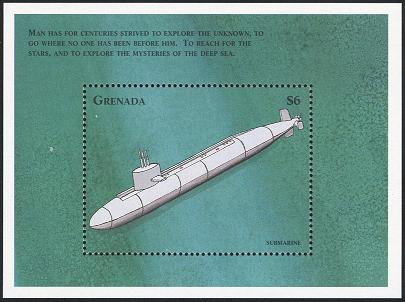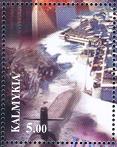|
Nuclear For The Rich Conventional For The Rest
Starting from the mid 50s, and after Nautilus proved her propulsion as feasible, the genealogic tree of submarine would grow rapidly a new and a very thick branch called the nuclear submarine, designated SSN, as opposing to the SS for conventional submarines. The development of closed-circuit systems would continue, especially in some European navies seeking a lower-cost alternative to nuclear power.
The nuclear submarine would evolve to be the key player in the East-West Cold War as an A1 weapon of deterrent with it’s later on developed nuclear head ballistic missile. Those kinds of platforms, SSBN built mainly by the US and the USSR, would cruse the seas and dominate the oceans. Britain and France will follow later supported by the US and further on China. India and Pakistan will join with SSNs, mainly supported by the USSR.
The advantages of having a submarine based nuclear deterrent were obvious: nuclear weapons could be hidden beneath the waves and launched from anywhere. The submarines themselves, owing to their nuclear propulsion, had incredible endurance and would never need to surface whilst on patrol. Furthermore they were virtually undetectable and could roam the ocean depths unhindered.
The SSN, nuclear attack submarine, evolving to be the SSBN, ballistic missile submarine, would grow up to be displaced 15,000 to 25,000 ton submerged, 450 to 560 feet long careing up to 24 ballistic missiles and capable of diving to more then 600 meters running at a submerge maximum speed of more then 30 knots.
The conventional ones, diesel-electric submarines, will go on developing steadily mostly by European countries like Germany, Holland, Sweden and Italy, Britain and France would go on developing both conventional and nuclear. The main field of interest and research would be finding a good solution to the annoying handicap, which is the need of snorting and recharging batteries. AIP, Air Independent Propulsion as they are called, will be developed and tried such as Close Cycle Diesel, Sterling Engine and Fuel Cells.
Both, Conventional and Nuclear, went on sheering interest developing underwater acoustics and sonar, ways of communication above and under water, sophisticated weapons (torpedoes and missiles) and hull shapes in order to achieve higher underwater speeds and propulsion efficiency.
Back to history index
 |
United States |
|
Meter slogan, Silhouette of a conventional submarine, Gorton CT, Feb' 24, 1953 |
 |
United States |
|
Meter slogan, Silhouette of a nuclear submarine, Gorton CT, Dec' 26, 1961 |
 |
Nicaragua |
1976 |
200th anni` American independence (set of 16 stamps,8 pairs) |
 |
Grenada |
1998 |
Nuclear submarine |
 |
Kalmmykia (Russia) |
2003 |
Nuclear submarine |
|